Introduction to Mechanical Keyboard Switches
For many computer enthusiasts, the keyboard is not just a tool; it’s a part of their identity. Mechanical keyboard switches play a crucial role in defining the typing experience. These switches come in various types, each with unique characteristics. Whether you’re a gamer, a writer, or a coder, understanding mechanical keyboard switch types is vital. They influence the feel, sound, and responsiveness of your keyboard. This guide dives into the world of mechanical switches. We will explore different brands, categories, and factors that affect switch choice. You will learn the distinctions between popular switch types. And, if you’re curious about what the future holds, we’ll touch on upcoming innovations in switch technology. By the end of this guide, you’ll be equipped to choose the right switch for your needs.
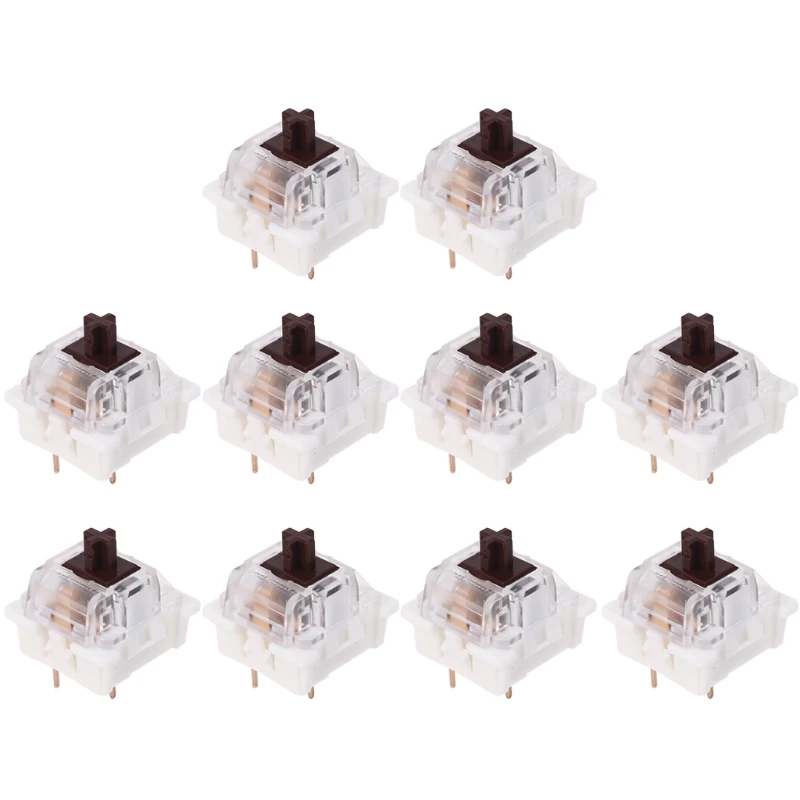 Different Brands of Mechanical Switches
Different Brands of Mechanical Switches
Given the variety of mechanical keyboard switch types, brand choice becomes a key decision for buyers. Here, we examine some of the most prominent brands and their signature switches.
Cherry MX Switches
Cherry MX is often regarded as the benchmark for mechanical switches. They provide a range of options, from linear to clicky. Not only are they known for their durability, but also for their consistent performance. Gamers and typists alike praise Cherry MX switches for their reliability.
Razer Switches
Razer switches are a favorite among gamers for their fast actuation. They have developed unique switch types that cater specifically to gaming needs. These switches boast a shorter travel distance and are designed to register key presses swiftly, offering a competitive edge.
Logitech Romer-G Switches
Logitech’s Romer-G switches are known for their durability and quiet operation. They are particularly appreciated for their tactile feedback, which is less noisy compared to other switches. Ideal for office settings, Romer-G switches have a unique design that also improves LED backlighting.
Corsair Exclusive Switches
Corsair has come up with their exclusive range of switches tailored to different user preferences. These switches are often highlighted for their durability and responsiveness. Corsair keyboards have a loyal following, with many users swearing by the brand’s custom-developed switch technology for gaming and typing prowess.
Categories of Mechanical Switches
The world of mechanical keyboards is rich with diverse switch options. These switches fall broadly into three categories: linear, tactile, and clicky. Each category has unique features that cater to different user preferences.
Linear Switches
Linear switches are characterized by a smooth keystroke. There is no tactile bump or click sound during actuation. This results in a consistent and fluid keypress, making them a preferred choice for gaming and fast typing. Linear switches are often recognized for their quick response time.
Tactile Switches
Tactile switches provide a noticeable bump mid-press, signifying the key actuation point. This feedback helps typists avoid bottoming out the keys, leading to a more measured typing experience. Tactile switches are appreciated for their balance between gaming and typing.
Clicky Switches
Clicky switches are distinguished by an audible click sound at the point of actuation, accompanied by a tactile bump. The sound provides satisfying feedback, which can be appealing to typists who enjoy audible confirmation of their keystrokes. However, the noise level may not be suitable for quiet environments.
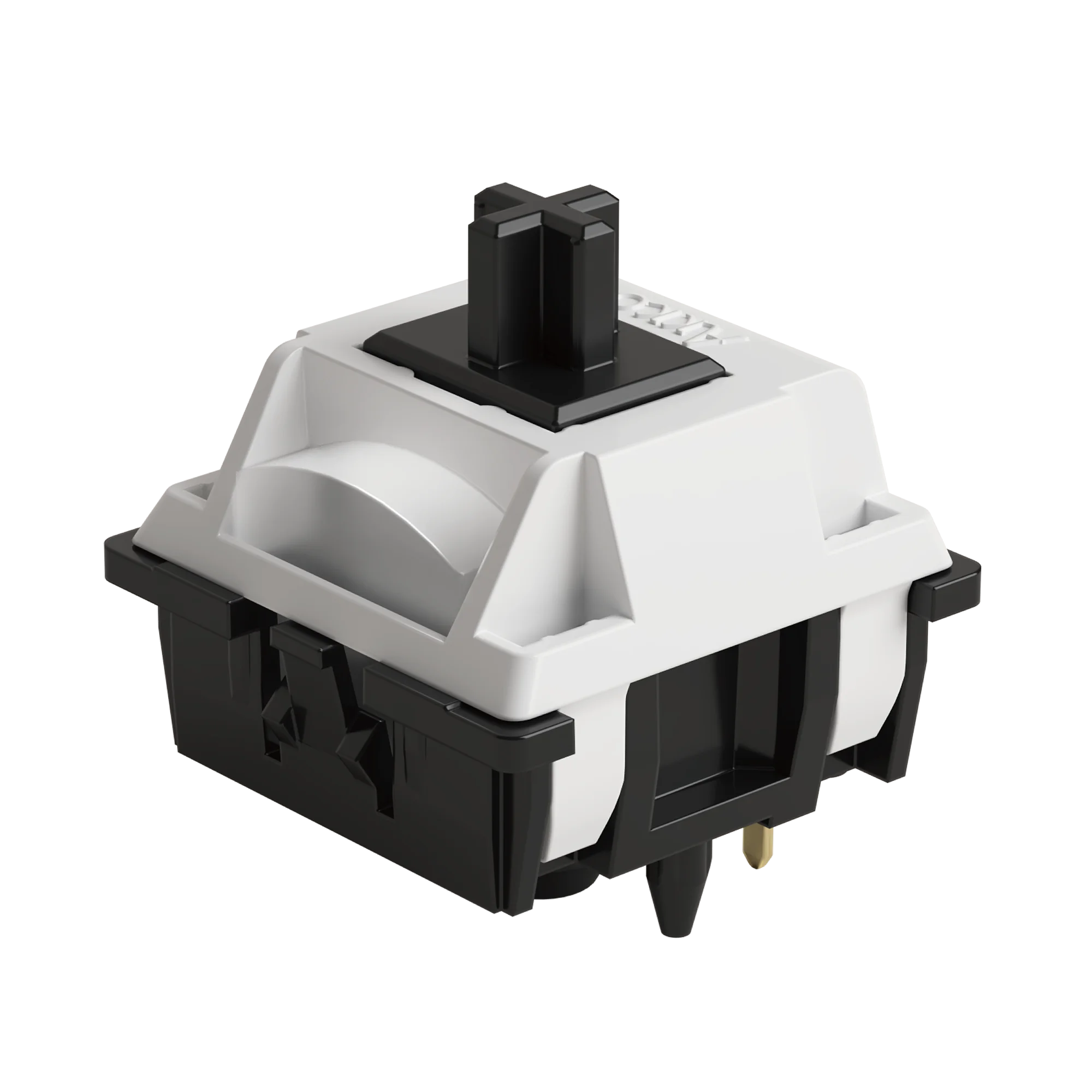 Factors Affecting Switch Choice
Factors Affecting Switch Choice
When choosing mechanical keyboard switch types, certain factors greatly influence user preference.
Actuation Force
Actuation force is the amount of pressure needed to activate a key. Lower forces result in less finger strain, often preferred by gamers for swift actions. Higher actuation forces provide a more deliberate typing feel, suited for those who type heavily.
Travel Distance
Travel distance refers to how far a key moves down before it registers a keystroke. Shorter distances enable faster typing and gaming responses. Longer distances may reduce accidental key presses, ideal for precision tasks.
Sound Level
Noise can be a big consideration. The clack of clicky switches may be gratifying to some but disruptive to others. Quieter switches are better for shared spaces or office environments to minimize disturbance.
Durability
Lastly, durability ensures that your keyboard can withstand millions of keystrokes over its lifespan. More durable switches prevent the need for frequent replacements, offering better long-term value for users.
Comparison of Popular Switch Types
Choosing the right mechanical keyboard switch type can be daunting with many options available. This section compares some of the most popular switches from top brands to clarify their differences. Examining these switches closely provides insights into which type may suit your typing or gaming needs best.
Cherry MX Red vs Blue
Cherry MX Reds offer a linear feel with no tactile bump and are quiet. They require less force to press, which is ideal for gamers who need rapid key presses. On the other hand, Cherry MX Blues are clicky with a tactile feedback. They need more force and produce a louder click, preferred by typists who appreciate auditory feedback.
Razer Green vs Yellow
Razer Green switches are clicky and similar to Cherry MX Blues in sound and tactile bump. They also suit typists who enjoy aural confirmation of key presses. Razer Yellow switches, in contrast, have a linear press with a silent operation, designed for fast-paced gaming with their reduced travel distance.
Logitech Romer-G Tactile vs Linear
Logitech Romer-G Tactile switches offer a noticeable bump for feedback during typing, without the noise of clicky switches. It’s a middle ground suitable for both typing and gaming. The Romer-G Linear switches provide a smooth keystroke, preferred by some gamers for their quiet and quick actuation.
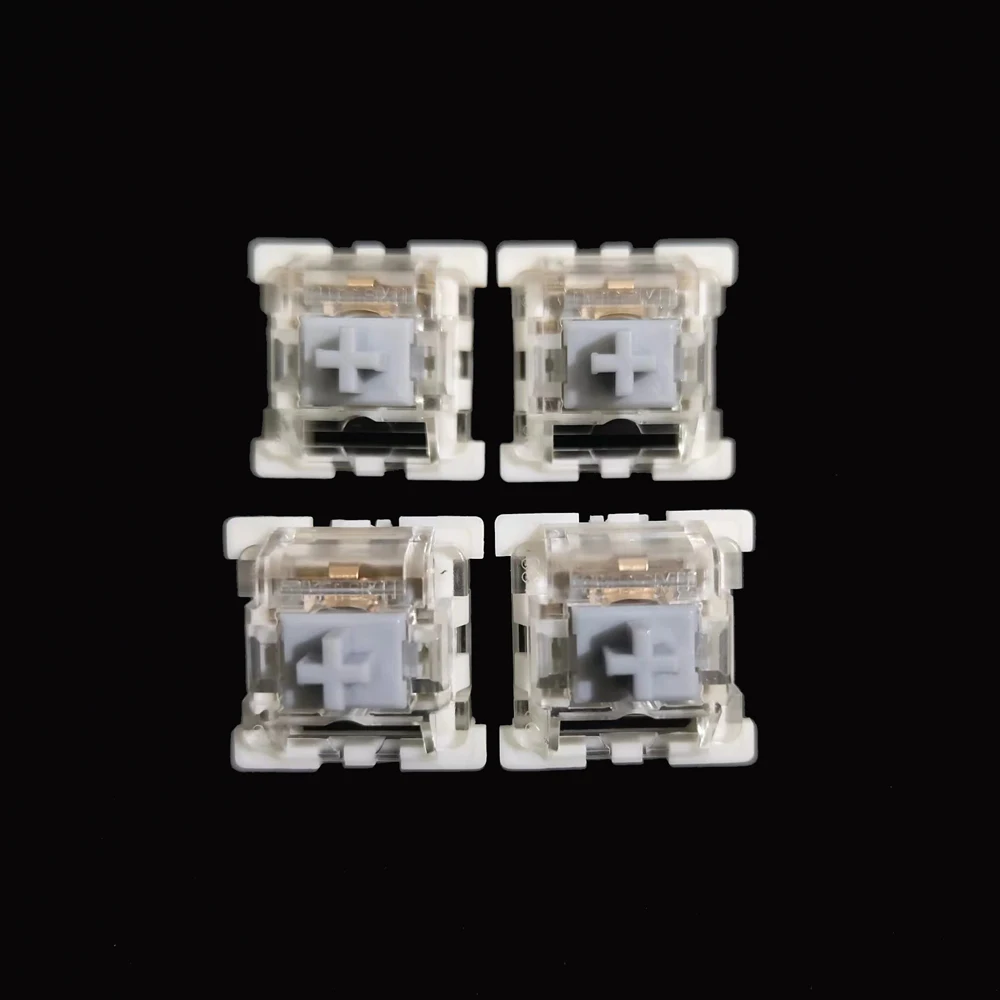 Upcoming Innovations in Switch Technology
Upcoming Innovations in Switch Technology
The mechanical keyboard market constantly evolves, with innovations enhancing the typing experience. As technology advances, upcoming developments in mechanical keyboard switch types are particularly exciting for enthusiasts and professionals alike.
New Materials for Better Durability
Manufacturers are experimenting with new materials to increase switch lifespan and stability. Advanced plastics and metals, possibly including lightweight alloys, could lead to even more durable and reliable switches.
Faster Actuation for Gaming
The quest for speed has led to switches designed for near-instantaneous actuation. This might involve not just the physical design but also integrating electronic enhancements to improve response times.
Adjustable Actuation Points
Some new switches may offer adjustable actuation points. Users could customize the actuation distance to their liking, blending comfort and performance uniquely for each individual.
Quieter Yet Tactile Options
Research into silencing mechanisms without compromising tactile feedback could result in quieter switches that are still satisfying to use, benefiting both office users and streamers.
Improved RGB Illumination
Switch innovations aren’t just about feel and performance. Enhanced designs for clearer and more vivid RGB lighting are on the horizon, improving aesthetics and visibility in low-light conditions.
Eco-friendly Switches
Sustainability is becoming increasingly important. We may soon see switches made from biodegradable materials or designed for easier recycling, reflecting a growing environmental consciousness within the industry.
These innovations hint at a future where mechanical keyboard switches are not just about typing but an overall personalized and optimized interaction with our devices. The evolving landscape of switch technology promises to provide users with a broader array of choices to tailor their keyboards to their specific needs and preferences.
How to Choose the Right Switch for You
Choosing the right mechanical keyboard switch type matters. It shapes your typing and gaming experience. It’s time to recap and consider the best switch for your needs.
Assess Your Needs
Think about the tasks you do most. Is it gaming? Typing? Or a mix of both? Your answer will guide your choice. If gaming tops your list, linear switches might be the way to go. For heavy typing, tactile or clicky switches could be better.
Consider Actuation Force and Travel Distance
A low actuation force can reduce finger fatigue. This factor is crucial for gamers. Travel distance also plays a part. Short ones speed up keystrokes, while longer ones help avoid typos.
Don’t Forget the Sound Level
Work in an office or play late at night? A quieter switch type will keep peace with those around you. Love the clicky feedback? Make sure it’s okay with your environment.
Think Long Term with Durability
Picking a durable switch saves money and hassle. It’s an investment in your keyboard’s lifespan.
Test Them Out
If possible, try before you buy. Testing switches can confirm what feels right for you.
In the sea of mechanical keyboard switch types, there’s a perfect match for everyone. Consider the factors discussed, from brands like Cherry MX and Razer to switch categories and innovations. With these tips, you’ll find your ideal typing companion in no time.
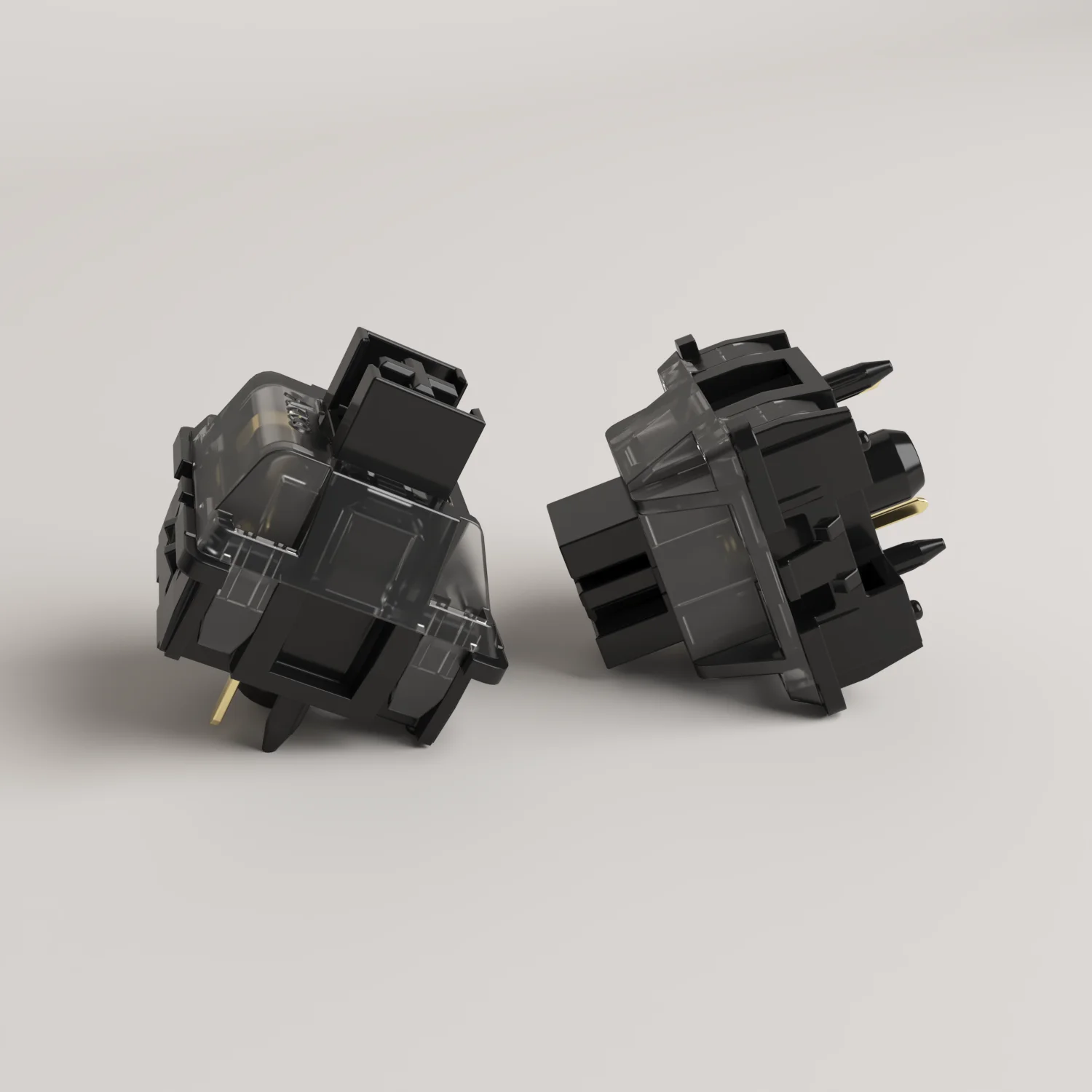 Customizing Your Mechanical Keyboard with Switch Types
Customizing Your Mechanical Keyboard with Switch Types
One of the most exciting aspects of mechanical keyboards is the ability to customize them to suit your personal preferences. By selecting different switch types, you can tailor the typing experience to match your needs and style.
Swapping Switches: Enhancing Compatibility
Many mechanical keyboards, particularly those with hot-swappable sockets, allow users to easily swap out switches without soldering. This feature enables you to experiment with different switch types and find the perfect match for your typing style. Whether you prefer the tactile feedback of a Brown switch or the rapid response of a Speed Silver, swapping switches can transform your keyboard’s feel and performance.
Lubricating Switches: Smoothing Keystrokes
Lubricating your mechanical keyboard switches can significantly enhance their smoothness and reduce noise. High-quality lubricants minimize friction between moving parts, resulting in a quieter and more fluid typing experience. This customization step is particularly beneficial for linear switches, which can become even smoother and more silent when properly lubricated.
Adding Dampening Rings: Reducing Noise and Vibration
Dampening rings, also known as o-rings, can be added to mechanical switches to soften the impact of keypresses and reduce overall noise. These small rubber rings are placed on the stem of each switch, providing cushioning when the key bottoms out. This modification is ideal for users who want to maintain the tactile or linear feel of their switches while minimizing noise.
Custom Keycaps: Personalizing Aesthetics
While not directly related to switch types, customizing keycaps can complement your chosen switches and create a cohesive and personalized aesthetic. Keycaps come in various materials, profiles, and colors, allowing you to match them with your switches for a unified look. Moreover, certain keycap sets are designed to enhance the feel of specific switch types, further optimizing your keyboard’s performance.
The Future of Mechanical Keyboard Switch Types
As technology advances and user preferences evolve, the landscape of mechanical keyboard switch types continues to expand. Innovations in materials, design, and functionality are driving the development of new switches that offer improved performance and enhanced user experiences.
advancements in Switch Technology
Emerging switch technologies aim to address current limitations and meet the growing demands of users. For example, companies are exploring switches with variable actuation points, allowing users to customize the trigger point based on their preferences. Additionally, advancements in switch durability and reliability are ensuring that mechanical keyboards remain a long-term investment for users.
Integration with Smart Devices
The integration of mechanical keyboard switches with smart devices and IoT technology is another promising trend. Switches that can communicate with software to provide dynamic feedback or adapt to different usage scenarios are being developed. This integration opens up new possibilities for personalized and adaptive typing experiences, further enhancing the versatility of mechanical keyboards.
Sustainable and Eco-Friendly Switches
With increasing awareness of environmental issues, there is a growing demand for sustainable and eco-friendly mechanical keyboard switches. Manufacturers are exploring the use of recycled materials and sustainable production practices to reduce the environmental impact of their switches. Additionally, the longevity of mechanical switches contributes to sustainability by minimizing the need for frequent replacements.
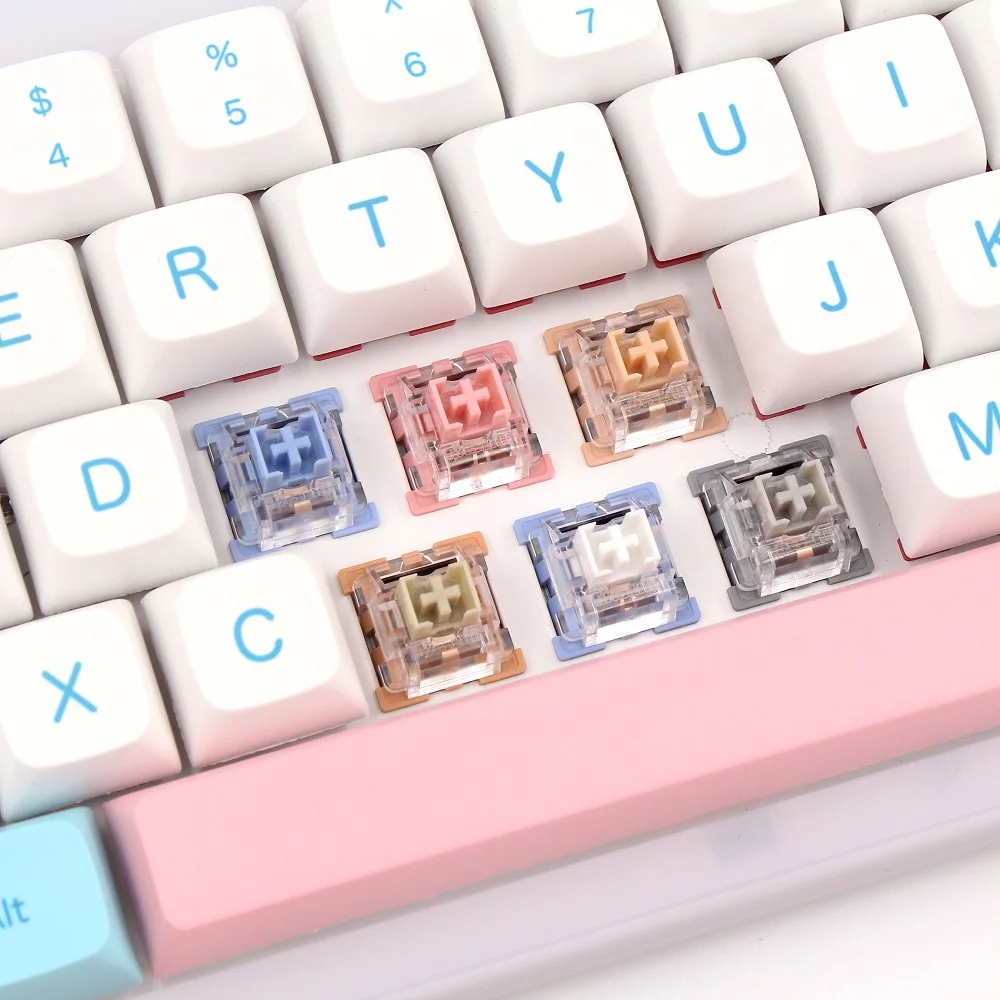 Conclusion
Conclusion
In summary, exploring the various mechanical keyboard switch types reveals a world of options tailored to different preferences and needs. From the tactile feedback of Cherry MX Browns to the smooth linear action of Gateron Reds, each switch type offers unique advantages that can enhance your typing and gaming experiences. By understanding the distinct characteristics, benefits, and use cases of each switch type, you can make an informed decision that aligns with your personal preferences and requirements.
Moreover, the ability to customize your mechanical keyboard through switch swapping, lubrication, and keycap modifications empowers you to create a truly personalized typing environment. As the industry continues to innovate, the future of mechanical keyboard switch types promises even more refined and versatile options, catering to the ever-evolving demands of users.
Whether you’re a seasoned enthusiast or a newcomer to the mechanical keyboard scene, taking the time to explore and understand the different switch types will undoubtedly enhance your overall experience. Embrace the diversity of mechanical keyboard switch types and elevate your typing experience to new heights, ensuring that your keyboard not only meets but exceeds your expectations.